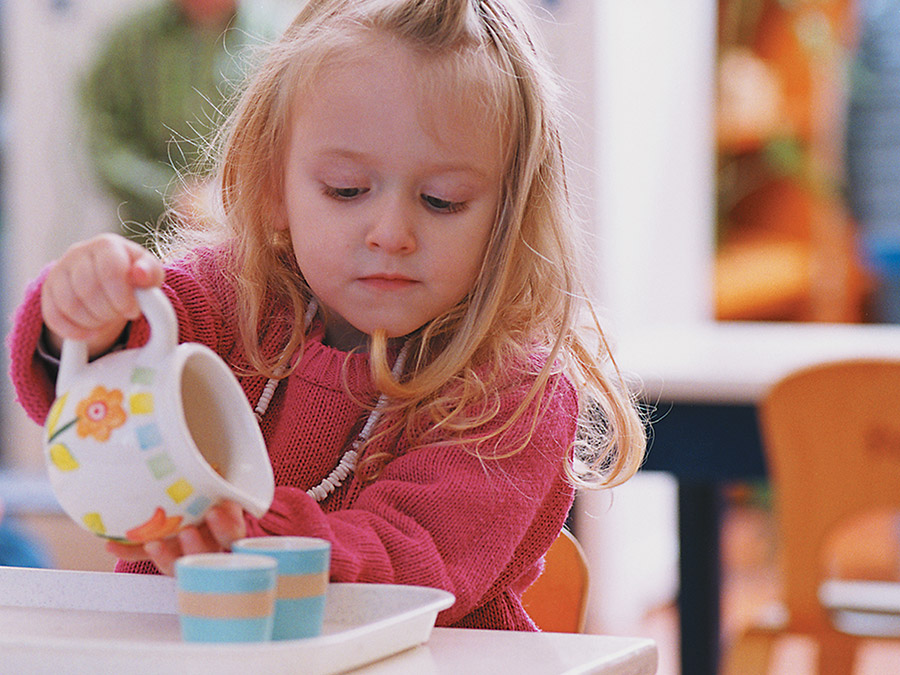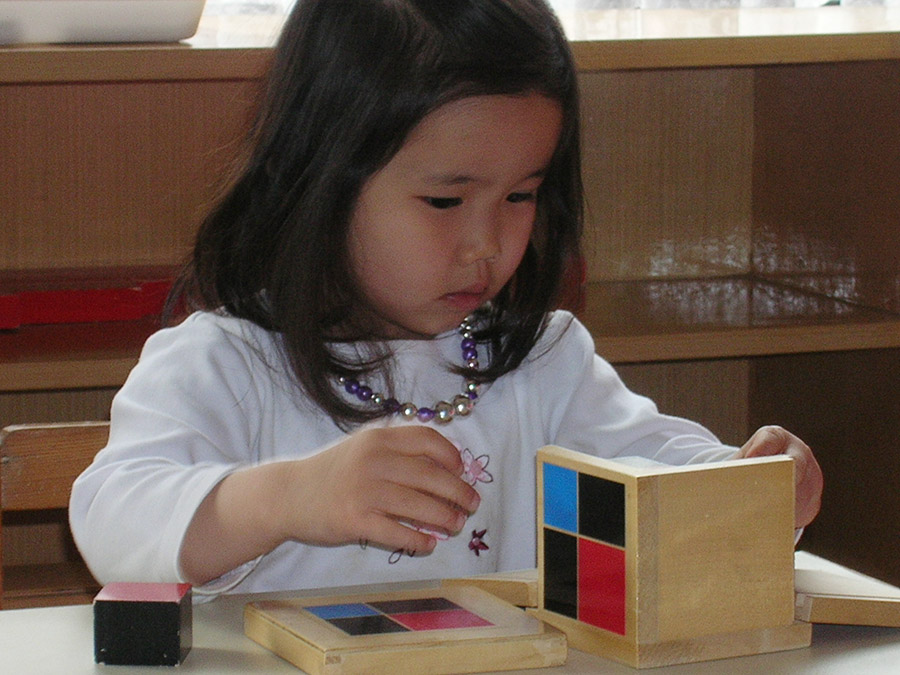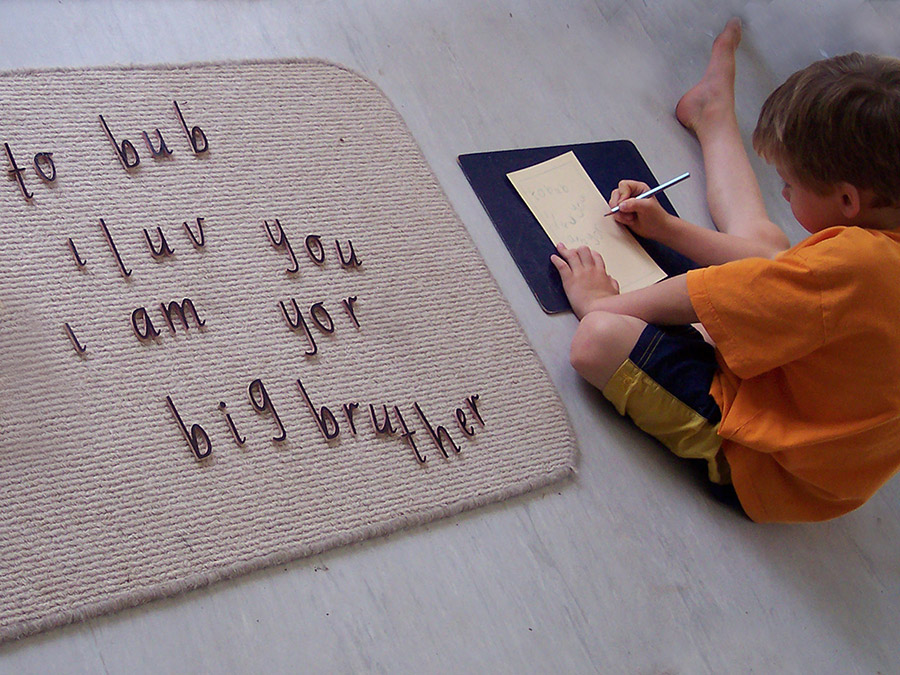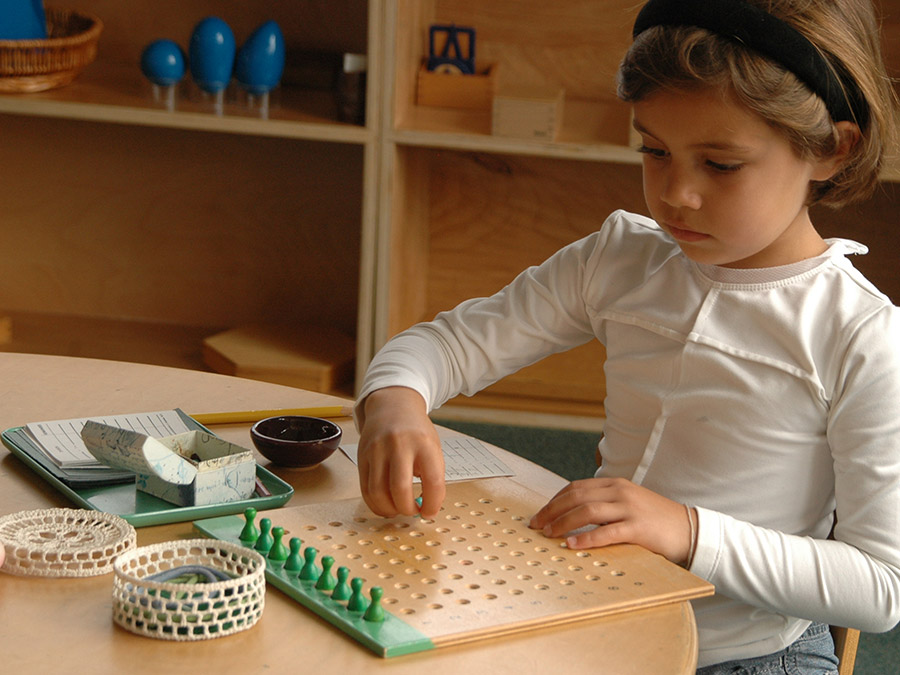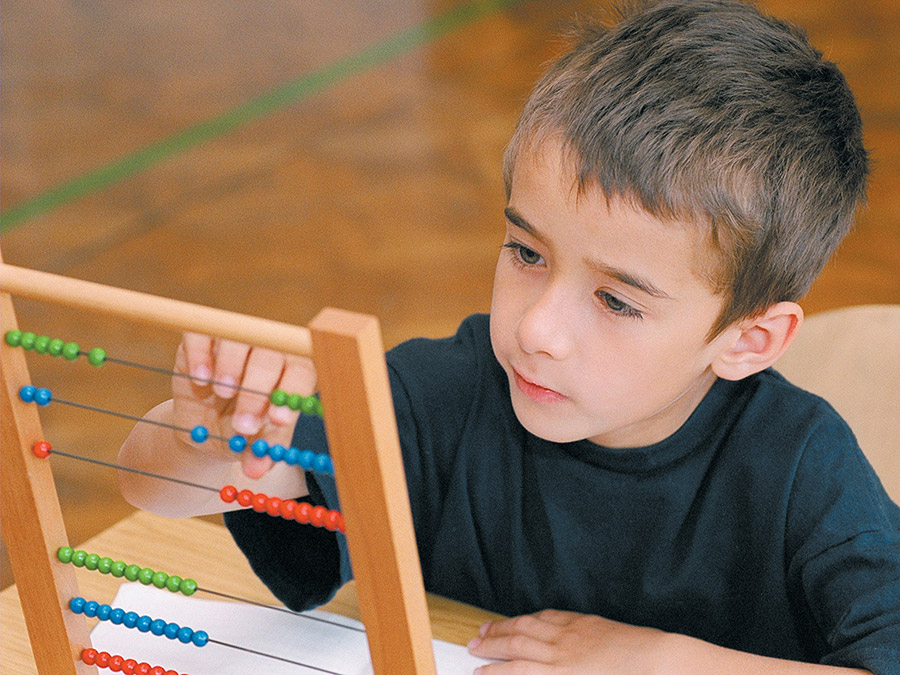Children between the age of birth and six possess an "absorbent mind". This almost genius capacity for mental absorption enables them to learn their native tongue, to perfect movement and internalise order. Maria Montessori observed that children also experience Sensitive Periods in their development. These are periods of special sensitivity when the child is attracted to certain stimuli in his or her environment allowing them to acquire certain knowledge and skills. These periods occur universally for all children at approximately the same age and provide the time for optimal development of that particular skill or knowledge.
The 3 to 6 year old child is undergoing a process of self-construction. The application of the Montessori philosophy and the specifically designed Montessori equipment aids the child's ability to absorb knowledge and continue this path of self-construction. There are four main areas in the pre-school program: Practical Life, Sensorial, Language and Mathematics. Considerable emphasis is also placed on Creative Arts, Music, Science, Geography and Cultural Studies. Acquisition of one's own first culture is the child's central developmental drive in the first plane of development.
The pre-primary environment serves this drive abundantly, bringing the world to the child. Globes, maps, songs, land forms, collections of pictures of life in different cultures, and much more, is offered, with the aim of helping the child to grow as an individual appreciating the larger context of his or her world.
Practical Life
The Practical Life component of the Montessori approach is the link between the child's home environment and the classroom. The child's desire to seek order and independence finds expression through the use of a variety of materials and activities which support the development of fine motor as well as other learning skills needed to advance to the more complex Montessori equipment. The practical life materials involve the children in precise movements which challenge them to concentrate, to work at their own pace uninterrupted, and to complete a cycle of work which typically results in the feelings of satisfaction and confidence. Practical life encompasses four main areas: Control of Movement, Care of Person, Care of Environment , and Grace and Courtesy.
Sensorial
From an early age children are developing a sense of order and they actively seek to sort, arrange and classify their many experiences. The sensorial component provides a key to the world, a means for a growth in perception, and understanding that forms the basis for abstraction in thought. The sensorial materials give the child experience initially in perceiving distinctions between similar and different things. Later the child learns to grade a set of similar objects that differ in a regular and measurable way from most to least. Each piece of equipment is generally a set of objects which isolate a fundamental quality perceived through the senses such as color, form, dimension, texture, temperature, volume, pitch, weight and taste. Precise language such as loud/soft, long/short, rough/smooth, circle, square, cube and so on is then attached to these sensorial experiences to make the world even more meaningful to the child.
Language
Maria Montessori did not believe that reading, writing, spelling and language should be taught as separate entities. Pre-primary children are immersed in the dynamics of their own language development and the Montessori approach provides a carefully thought-out program to facilitate this process. Oral language acquired since birth is further elaborated and refined through a variety of activities such as songs, games, poems, stories and classified language cards.
Indirect preparation for writing begins with the practical life exercises and sensorial training. Muscular movement and fine motor skills are developed along with the ability of the child to distinguish the sounds which make up language. With this spoken language background the directress begins to present the alphabet symbols to the child. Not only can children hear and see sounds but they can feel them by tracing the sandpaper letters. When a number of letters have been learned the movable alphabet is introduced. These cardboard or wooden letters enable the child to reproduce his or her own words, then phrases, sentences and finally stories. Creativity is encouraged and the child grows in appreciation of the mystery and power of language. Other materials follow which present the intricacies of non-phonetic spelling and grammar. Because children know what they have written, they soon discover they can read back their stories. Reading books both to themselves and others soon follows.
Mathematics
Mathematics is a way of looking at the world, a language for understanding and expressing measurable relationships inherent in our experience. A child is led to abstract ideas and relationships by dealing with the concrete. The child's mind has already been awakened to mathematical ideas through the sensorial experiences. The child has seen the distinctions of distance, dimension, graduation, identity, similarity and sequence and will now be introduced to the functions and operations of numbers. Geometry, algebra and arithmetic are connected in the Montessori method as they are in life. For instance the golden bead material highlights the numerical, geometrical and dimensional relationships within the decimal system. Through concrete material the child learns to add, subtract, multiply and divide and gradually comes to understand many abstract mathematical concepts with ease and joy.
